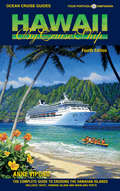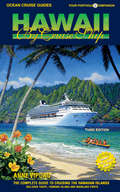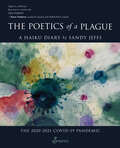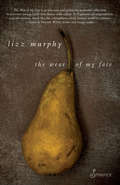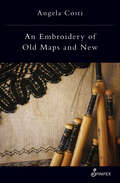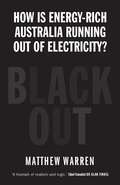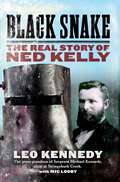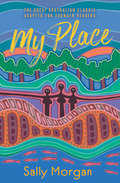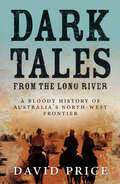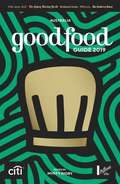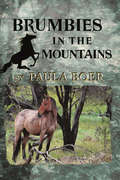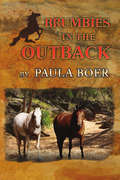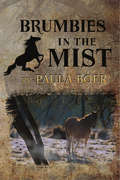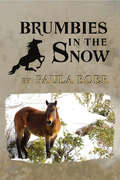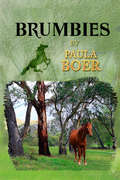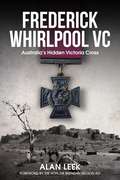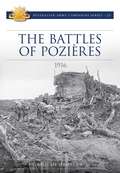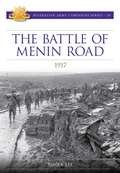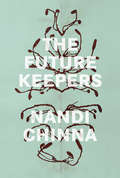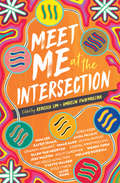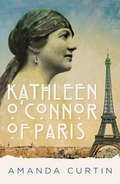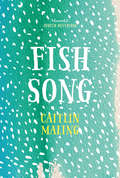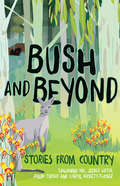- Table View
- List View
HAWAII BY CRUISE SHIP – 4th Edition: The Complete Guide to Cruising the Hawaiian Islands Includes Tahiti, Fanning Island and Mainland Ports
by Anne VipondThis new edition covers all the islands and attractions that make Hawaii such an attractive cruise destination. Extensive shore excursion detail and cruise-and-stay options are included with tips on selecting your cruise and cabin as well as preparing for your Hawaii cruise. The author also gives readers insight into extra expenses and handling gratuities for stewards and waiters with background on shipboard life and activities. Detailed maps show exactly where the ships dock and locations of leading hotels on Oahu and Maui. Hawaii By Cruise Ship includes history of the rich Hawaiian culture and how the islands changed with the arrival of Europeans. A section of the book also outlines the wildlife that can be seen in Hawaii includings maps with best whalewatching locations. Over 400 color photographs and dozens of color maps detailing the islands, ports and attractions complement the text. Includes islands of the South Pacific, French Polynesia and mainland ports from San Diego and Los Angeles to Vancouver.
HAWAII BY CRUISE SHIP – 3rd Edition: The Complete Guide to Cruising the Hawaiian Islands. Includes Tahiti, Fanning Island and Mainland Ports.
by Anne VipondThis new edition covers all the islands and attractions that make Hawaii such a great cruising destination. Extensive shore excursion detail and cruise-and-stay options are included as are insider tips on selecting and preparing for your Hawaii cruise. Detailed maps show exactly where the ships dock and locations of of leading hotels on Oahu and Maui. Includes tips on shipboard life, activities and cabin selection. The author also gives readers insight into extra expenses and handling gratuities for stewards and waiters. Hawaii By Cruise Ship gives readers a history of the rich Hawaiian culture and how the islands changed with the arrival of Europeans. A section of the book also outlines the wildlife that can be seen in Hawaii and includes a map showing the best whalewatching locations. Over 400 color photographs and dozens of color maps detailing the islands, ports and attractions are complement the text. This new edition also includes coverage of the South Pacific and French Polynesia as well as the mainland ports from San Diego and Los Angeles to Vancouver.
The Poetics of a Plague, A Haiku Diary: The 2020-2021 COVID-19 Lockdown
by Sandy JeffsWhat was it like to live in Melbourne during the 2020 2.0 lockdown? Capturing the day-to-day struggles of lockdown, the daily news, Dan Andrews' 11am morning press conferences, the tensions between Victorians and the rest of Australia, Trump's chaotic America, the conspiracy theories that circulated and battling her own mental health, Sandy Jeffs takes us through the whirlwind of events in imaginative haiku poems. These became her sanity while the world spiralled into madness. First wave fear is back. Before an end was in sight now there is no end. trying to make sense of an unravelling world that is downright mad. This is not only a book about the pandemic but also about political wins and political failures. From Dan Andrews to Donald Trump. Each day brings news that creates despair or joy: the pandemic numbers and the voting numbers side by side. And as the world is in the grip of COVID madness, sanity is found in poetry.
The Wear of My Face
by Lizz MurphyThe sun is our closest star just average a middle-aged dwarf past its prime but still a few billion years to go and fierce is its heat It's domains: interior surface atmospheres inner corona outer corona Did someone say Corona? The Wear of My Face is an assemblage of passing lives and landscapes, fractured worlds and realities. There is splintered text and image, memory and dream, newscast and conversation. Women wicker first light, old men make things that glow, poets are standing stones, frontlines merge with tourist lines. Lizz Murphy weaves these elements into the strangeness of suburbia, the intensity of waiting rooms, bush stillness, and hopes for a leap of faith as at times she leaves a poem as fragmented as a hectic day or a bombed street. What may sometimes seem like misdemeanours of the mind, to Lizz they are simply the distractions and disturbances of daily life somewhere. There is a rehomed greyhound, a breezy scientist, ancient malleefowl, beige union reps and people in all their conundrums. You might travel on a seagull's wing or wing through the aerosphere.
An Embroidery of Old Maps and New
by Angela CostiI can see how I carry Yiayia's war in the ample dunes of my belly, the moment she smelt the guns, she pinched the candle's wick,gathered the startled shadows of her children,flung my baby-mother onto her backand sprinted towards the neutral moon—Migration and the memories of women's traditions are woven throughout these poems. Angela Costi brings the world of Cyprus to Australia. Her mother encounters animosity on Melbourne's trams as Angela learns to thread words in ways that echo her grandmother's embroidery. Here are poems that sing their way across the seas and map histories.
The Second Son (The Novaks #1)
by Loraine PeckDuty always has a price. When Ivan Novak is shot dead putting out his garbage bins in Sydney’s west, his family wants revenge, especially his father Milan, a notorious crime boss. It’s a job for the second son, Ivan’s younger brother Johnny. But Johnny loves his wife Amy and their son Sasha. And she’s about to deliver her ultimatum: either the three of them escape this wave of killing or she’ll leave, taking Sasha. Torn between loyalty to his family and love for his wife, Johnny plans the heist of a lifetime and takes a huge risk. Is he prepared to pay the price? And what choice will Amy make? The Second Son is a brilliant action-packed crime debut that creates a world where honour is everything, violence is its own language, and love means breaking all the rules.
Blackout
by Matthew WarrenFor 20 years Australia has been in political denial about the seismic changes occurring in the way we power our country. Successive governments continue to tell people that power prices will fall while the lights stay on. Debate is reduced to two equally preposterous narratives: coal-fired, climate change indifference versus an impossibly utopian renewable energy future. This nonsense swirls around an incredulous public while power prices rise, the grid is stretched, energy becomes political poison and the earth warms. How did it come to this and how can we find our way out of this mess? Matthew Warren has worked for all sides of the energy industry, is regularly attacked for being too pro-coal and too pro-renewables, and writes without fear or favour. He has been lobbying for a national climate and electricity policy for over a decade. With an entertaining and fascinating narrative, Blackout cuts through the waffle to chart the disintegration of Australia?s energy security, call out what is holding us back, and plot the way for a brighter future.
Blackout
by Matthew WarrenFor 20 years Australia has been in political denial about the seismic changes occurring in the way we power our country. Successive governments continue to tell people that power prices will fall while the lights stay on. Debate is reduced to two equally preposterous narratives: coal-fired, climate change indifference versus an impossibly utopian renewable energy future. This nonsense swirls around an incredulous public while power prices rise, the grid is stretched, energy becomes political poison and the earth warms. How did it come to this and how can we find our way out of this mess?Matthew Warren has worked for all sides of the energy industry, is regularly attacked for being too pro-coal and too pro-renewables, and writes without fear or favour. He has been lobbying for a national climate and electricity policy for over a decade. With an entertaining and fascinating narrative, Blackout cuts through the waffle to chart the disintegration of Australia&’s energy security, call out what is holding us back, and plot the way for a brighter future.
Black Snake
by Leo Kennedy Mic LoobyAuthor Leo Kennedy is the great-grandson of Sergeant Michael Kennedy. Raised in the shadow of his great-grandfather?s murder, Leo witnessed the deep psychological wounds inflicted on successive generations of his family ? and the families of other victims ? as the Ned Kelly myth grew around them and the sacrifice of their loved ones was forgotten. Leo himself was nicknamed `Red Ned? at school and taunted for being on the wrong side of Australian history. Now, for the first time, and in brilliant prose that brings these historical episodes to life, Black Snake challenges the legend of Ned Kelly. Instead of celebrating an heroic man of the people, it gives voice to the victims of a merciless gang of outlaws. This is a captivating true story, gleaned from meticulous research and family history, of two men from similar backgrounds whose legacies were distorted by history.
My Place for Younger Readers: My Place For Young Readers - Part 3
by Sally MorganSince its publication in 1987, Sally Morgan's My Place has sold more than half a million copies in Australia, been translated and read all over the world, and been reprinted dozens of times. Sally's rich, zesty and moving work is perhaps the best loved biography of Aboriginal Australia ever written. My Place for Younger Readers is an abridged edition that retains all the charm and power of the original.
Dark Tales from the Long River: A Bloody History of Australia's North-west Frontier
by David PriceFrom searches for serial killers and missing persons to the persecution of migrants and Aboriginal people, David Price takes us back to a time when the line between lawmakers and criminals was lightly drawn. Based on a wide array of contemporaneous accounts of life in the Gascoyne, these sometimes shocking, sometimes disturbing true crime stories depict an era when laws served to maintain order rather than to secure justice. Dark Tales from the Long River offers a window into an evolving history of colonisation that is still struggling into the light.
Australia Good Food Guide 2019
by Myffy RigbyThe 2019 edition of this acclaimed, highly trusted national guide – the home of the hats – reviews 500 restaurants around Australia and award the best eateries from Darwin to Hobart, Melbourne to Perth, and Sydney to Brisbane.The Age Good Food Guide was launched in 1979 and The Sydney Morning Herald Good Food Guide followed five years later. With the addition of The Brisbane Times, The Canberra Times and WA Today, the Good Food Guide is Australia's most trusted restaurant guide, compiled and edited by respected, independent critics. Reviewers arrive unannounced, pay for their own meals and are stringent judges, looking at service, ambiance, the X factor and, of course, the food. Hats are awarded to the best of the best. To achieve a hat is a pinnacle of a chef's career and a restaurant's history, and the term ‘hatted’ has become part of the Australian lexicon.
Brumbies in the Mountains (Brumbies #5)
by Paula BoerBen's family farm, including Ben's horses, must be sold. Louise's family is moving overseas for her father's work. Meanwhile brumbies are being shot and the friends discover an orphan foal. While training Brandy for the mountain country race, Ben discovers illegal logging in the park. Once again Ben and Louise must fight to save the wild brumbies, their horses, and their dreams.
Brumbies in the Outback (Brumbies #4)
by Paula BoerBen and Louise discover that life on a remote cattle station is very different to their Snowy Mountains home. Missing her horse, Honey, Louise struggles to adapt to the outback. Ben has a graver concern: he is desperate to prove that Brandy, his stallion, is fit after a serious leg injury, otherwise he may be destroyed. From mustering and working cattle, to tracking and taming desert brumbies, both friends are challenged by their experiences.
Brumbies in the Mist (Brumbies #3)
by Paula BoerThawing snow threatens Crowhurst with flooding and the wild horses are missing from the mountains. As the community struggles to protect their homes, disaster strikes for the Naylors. Ben and Louise are separated, and are each trying to take care of their own brumby's troubles. The disappearance of the herds remains a mystery until the friends make a worrying discovery.
Brumbies in the Snow (Brumbies #2)
by Paula BoerTaming a wild horse is no easy task, as Ben and Louise soon discover. Their progress is slowed by a runaway horse and a desperate search through the park for two lost hikers. Concern for an injured brumby adds to the complications. Follow the wild twists and turns of the Best Selling sequel Brumbies adventure, as Ben and Louise explore the High Country of Australia in winter and learn what it means to break in a brumby.
Brumbies (Brumbies #1)
by Paula BoerWhen city girl Louise moves to the country, she discovers the mountain brumbies are to be killed for pet food. She and Ben, a local farm boy, determine to save as many of the wild horses as they can. Despite opposition, they arrange a muster, but nothing goes according to plan. Following in the hoof-prints of "The Silver Brumby" and "The Man from Snowy River", this horse-packed adventure encounters challenges through some of the toughest territory in Australia.
Frederick Whirlpool VC: Australia's Hidden Victoria Cross
by Alan LeekFrederick Whirlpool’s Victoria Cross is displayed near the entrance to the Hall of Valour at the Australian War Memorial, Canberra. It was the first VC pinned to an Australian uniform, yet almost nothing was known about its enigmatic recipient. Two acts of valour during the Indian Mutiny, won him the Victoria Cross, but 17 severe sword wounds ended his career. Arriving in Victoria in 1859, he became a volunteer rifleman and school teacher. His VC was presented in Melbourne in 1861. He was an applicant to join the Victoria Police, but a corrupt recruitment process and unsolicited political interference prevented it. Repulsed by fame, he fled and hid his cross from the world. Fragments of his story were known, but since 1895, they have been tainted by error, guesswork and in one recent British work, pure fantasy. This work solves an old mystery. It reveals his true identity and early life in Ireland before joining the East India Company Army. To understand his service, the Central Indian campaign under Sir Hugh Rose, is examined in some detail, something that has not been done before. The real horrors of that campaign are revealed to show their devastating impact on this sensitive man. Rich sources reveal his anguished story. Humphrey James&’ reasons for changing his identity and leaving his family forever, are unearthed. His life in Australia is revealed, showing his fall, firstly from policing and then teaching, in NSW. He undoubtedly struggled with his demons and believed that he was destined for eternal damnation. The passage of his Victoria Cross, after his death was unknown before it appeared on the market in 1927. Its movements and those of his Indian Mutiny medal with its Central India clasp, are now revealed&’ This fascinating story fills huge gaps in the narrative of this ordinary man, whose life is deserving of factual interpretation. It is a story of heroism, suffering and failure, but the forgotten man will triumph in its telling. His sad life ended as a recluse in 1899, and he was buried in an unmarked grave in Windsor. The only mourner who attended his funeral left a thread, which has allowed painstaking research to uncover the true story of this sad and purposefully enigmatic hero.
The Battle of Pozieres 1916 (Australian Army Campaigns #22)
by Meleah HamptonThe Battle of Pozières has reverberated throughout Australia’s military history, long regarded as a costly battle that produced little meaningful gain. Pozières was characterised by the most intense artillery bombardment the Australians had experienced in the war thus far and ‘the hell that was Pozières’ became the yardstick by which subsequent bombardments were measured. The 13th Battalion’s Frank Massey described men who became ‘blithering idiots … Crying and weeping and — absolutely useless as a fighting man.’ The object of the battle was Pozières Ridge, a low rise that offered a good view of the German positions. Heavily fortified, the ridge and the pulverised remains of the village were contested bitterly and, during its six-week campaign, 1st Anzac Corps advanced little more than two miles and suffered 23,000 casualties. Charles Bean wrote that ‘Australian troops … fell more thickly on this ridge than on any other battlefield of the war.’ However, the first phase of the campaign was very successful, securing the fortified ruins of Pozières and the German second line. But follow-up operations failed to capitalise and subsequent assaults merely nibbled away at enemy positions without making significant headway. Yet the Battle of Pozières marks a significant achievement not only for 1st Anzac Corps, but for the British Expeditionary Force. In a war in which any advance was hard won, the wresting of the high ground from the Germans was crucial. For the battered Allied forces, the capture of Pozières Ridge provided faint hope of an end to a catastrophic war.
The Battle of Menin Road 1917 (Australian Army Campaigns #20)
by Roger LeeThe Passchendaele Campaign of 1917 is associated with images of slimy, oozing mud: mud deep enough and glutinous enough to drown men, horses and equipment, mud so pervasive that it, rather than the enemy, defeated the British Army’s only major campaign in Belgium. While these images are certainly true for the opening and final months of the campaign, mud was not he defining experience for the infantry of the Australian First and Second Divisions when, for the first time in history, two Australian Divisions fought a battle side by side in the Battle of Menin Road. For them, the defining experience was a well planned, well-conducted attack that saw all the objectives achieved in very short time. Menin Road was the third of the series of battles that together made up the Passchendaele (Third Ypres) Campaign. Intended to capture the high ground of the Gheluvelt Plateau east of Ypres to protect the right flank of the British Army advancing to its north, it was a difficult assignment. Earlier British attempts to clear the Plateau had been repulsed with heavy losses. With overwhelming artillery and air support, sound preparation and with limited objectives, the attack on 20 September surpassed all expectations. It was a classic example of how well-prepared and well-supported infantry could take and hold ground. However, as is explained in the book, it was also a classic example of why this operational method was too slow and would never win the war on the Western Front.
The Future Keepers
by Nandi ChinnaThe poems in The Future Keepers honour ecosystems and thecustodians of future ecologies. They navigate the poet's ownembodied experiences of change and succession – of family,community and place. From the research scientists, gardeners, birdsand plants of Kings Park, to the activism and ecosystems of the BeeliarWetlands, to the poet's own inherited landscapes, these poems evokemutuality and exchange in speaking of the gifts we receive from beingopen to encounters with other species, and the reciprocity that thesegifts imply.
Meet Me at the Intersection
by Ambelin Kwaymullina Rebecca LimMeet Me at the Intersection is an anthology of short fiction, memoir andpoetry by authors who are First Nations, People of Colour, LGBTIQA+ orliving with disability. The focus of the anthology is on Australian life asseen through each author's unique, and seldom heard, perspective.With works by Ellen van Neerven, Graham Akhurst, Kyle Lynch, EzekielKwaymullina, Olivia Muscat, Mimi Lee, Jessica Walton, Kelly Gardiner,Rafeif Ismail, Yvette Walker, Amra Pajalic, Melanie Rodriga, Omar Sakr,Wendy Chen, Jordi Kerr, Rebecca Lim, Michelle Aung Thin and AlicePung, this anthology is designed to challenge the dominant, homogenousstory of privilege and power that rarely admits ‘outsider' voices.
Kathleen O'Connor of Paris
by Amanda CurtinWhat does it mean to live a life in pursuit of art? In 1906, Kathleen O’Connor left conservative Perth, where her famous father’s life had ended in tragedy. She had her sights set on a career in thrilling, bohemian Paris. More than a century later, novelist Amanda Curtin faces her own questions, of life and of art, as she embarks on a journey in Kate’s footsteps. Part biography, part travel narrative, this is the story of an artist in a foreign land who, with limited resources and despite the impacts of war and loss, worked and exhibited in Paris for over forty years. Kate’s distinctive figure paintings, portraits and still lifes, highly prized today, form an inseparable part of the telling.
Fish Song
by Caitlin MalingMaling's new work is rich and diverse, exploring physical landscapes as well as historical and socio-cultural aspects of place. In her latest, deeply personal, collection Maling travels the coast of Western Australia writing about what the ocean provides—fish, livelihoods, sand and the ever-present sea breeze. In doing so she questions what poetry might offer by way of solace and reconnection in an age of climate change.
Bush and Beyond: Stories From Country
by Tjalaminu Mia Cheryl Kickett-Tucker Jaylon Tucker Jessica ListerGrandparents are special, and the time you spend with them is special, too. This collection draws together four tales for younger readers from the Waarda series of Indigenous stories, first edited by acclaimed author Sally Morgan. These charming tales share some exciting, happy and even scary times exploring country in bush and beyond.
